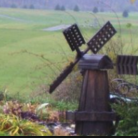
Drink in the pleasure of every facet of spring… from the sylvan palette of leaves in multitudinous shades of green, yellow and purple… to blossoms of white, pink, yellow, red, blue and every shade in between… to birds with their various colors and lilting tunes… to skies wrapped in shades of azure with clouds from white to deep gray… to shades of pink, purple, orange and red at sunrise and sunset… to the velvet black night skies of sparkling diamonds… to spring showers bearing fresh aromas as they saturate and nourish the plants and soil… to the tantalizing and aromatic blossoms from lilacs, roses, sweet peas, irises, daffodils, lilies of the valley… and so much more.
“See! The winter is past; the rains are over and gone. Flowers appear on the earth, the season of singing has come, the cooing of doves is heard in our land. The fig tree forms its early fruit; the blossoming vines spread their fragrance…” (Song of Solomon 2:11-13a) Enjoy creation’s blessing in every sense of sight and sound, taste and smell, for “[God] has made everything beautiful in its time!” (Ecclesiastes 3:11a)
Spring’s Debut
Linda A. Roorda
At the dawning of spring’s debut
The earth awakens from wintry slumber
She yawns and stretches, throwing off covers
Changing her gown from white to sylvan green.
~
She welcomes showers of refreshing dew
As fragrant aromas drift on gentle breeze
While life’s renewal and emerging growth
Bring bright adornment for the bleak and barren.
~
Slowly she dons her delicate gown
Until she’s covered in brilliant hues
With sunlight’s rays streaming their warmth
She lifts her face to absorb their glow.
~
Regaled in finery like delicate silk
She extends a brush to paint her palette
With every shade of the rainbow bright
Her crowning glory like entwining tresses.
~
As we gaze in awe at the transformation
From sleeping beauty to splendor arrayed
Like multi-hued gems that sparkle and shine
Is spring’s debut, prepared for the dance.
~~
- Read more...
- 0 comments
- 208 views

